Ginkgolic acid
Synonym(s):(Z)-6-(Pentadec-8-enyl)-2-hydroxybenzoic acid, Histone Acetyltransferase Inhibitor VI, PCAF Inhibitor II, SUMOylation Inhibitor, HAT Inhibitor VI;Histone Acetyltransferase Inhibitor VI, PCAF Inhibitor II, SUMOylation Inhibitor, (Z)-6-(Pentadec-8-enyl)-2-hydroxybenzoic acid, HAT Inhibitor VI;InSolution
- CAS NO.:22910-60-7
- Empirical Formula: C22H34O3
- Molecular Weight: 346.5
- MDL number: MFCD03093717
- EINECS: 200-683-7
- SAFETY DATA SHEET (SDS)
- Update Date: 2024-11-20 11:41:24

What is Ginkgolic acid?
Description
Ginkgolic acid is slightly toxic and is an allergen; for this reason, some sources suggest using only the standardized extract, which is standardized to the flavonoids and minimizes ginkgolic acid content.
Ginkgolic acid is active against the tubercle bacillus. Elsewhere, leaf extracts are used in peripheral arterial circulation problems like arteriosclerotic angiopathy, post-thrombotic syndrome, diabetic vasoconstriction with gangrene and angina, intermittent claudication,Raynaud's disease. Extracts are inhaled for ear, nose, and throat ailments like bronchitis and chronic rhinitis.
Extracts of the leaves and fruit of Ginkgo plants have long been used in traditional medicine and have multiple potential therapeutic applications, including ameliorating dementia. However, ginkgolic acids, 2-hydroxy-6-alkylbenzoic acids related to anacardic acids, may be deleterious components in these extracts. Ginkgolic acid C15:1 is a 2-hydroxy-6-alkylbenzoic acid in which the alkyl chain contains 15 carbons and is unsaturated at the 8 position. It inhibits SUMOylation in vitro (IC50 = 3 μM) and in cells without affecting protein ubiquitination. Ginkgolic acid C15:1 directly binds the SUMO-activating enzyme E1, blocking the formation of the E1-SUMO intermediate. Ginkgolic acid C15:1 also suppresses the development of pancreatic cancer xenografts in mice.
The Uses of Ginkgolic acid
Ginkgolic acid C15:1 may be used as a reference standard in the quantitative determination of alkylphenols like ginkgolic acids in Ginkgolic extract using high performance liquid chromatography coupled with mass spectrometry(HPLC-MS).
Ginkgolic acid C15:1 may be used as an analytical reference standard for the quantification of the analyte in Ginkgo biloba plant extracts, and dietary supplements using chromatography techniques.
Definition
ChEBI:Ginkgoic acid is a hydroxybenzoic acid. It derives from a salicylic acid.
General Description
Ginkgolic acid C15:1 is an alkylphenol belonging to the class of ginkgolic acids isolated from Ginkgo biloba leaves. It also shows strong allergenic properties, with carcinogenic and mutagenic activity.
Biochem/physiol Actions
Cell permeable: yes
Properties of Ginkgolic acid
| Melting point: | 45~48℃ |
| storage temp. | 2-8°C |
| solubility | Chloroform (Slightly), Methanol (Slightly) |
| Boiling point: | 221-223 °C(Press: 4 Torr) |
| Density | 0.9148 g/cm3 |
| form | White solid |
| pka | 3.08±0.30(Predicted) |
| color | White to Off-White |
| CAS DataBase Reference | 22910-60-7(CAS DataBase Reference) |
Safety information for Ginkgolic acid
| Signal word | Warning |
| Pictogram(s) |
 Exclamation Mark Irritant GHS07 |
| GHS Hazard Statements |
H317:Sensitisation, Skin H413:Hazardous to the aquatic environment, long-term hazard |
| Precautionary Statement Codes |
P261:Avoid breathing dust/fume/gas/mist/vapours/spray. P272:Contaminated work clothing should not be allowed out of the workplace. P273:Avoid release to the environment. P280:Wear protective gloves/protective clothing/eye protection/face protection. P302+P352:IF ON SKIN: wash with plenty of soap and water. P333+P313:IF SKIN irritation or rash occurs: Get medical advice/attention. |
Computed Descriptors for Ginkgolic acid
| InChIKey | YXHVCZZLWZYHSA-FPLPWBNLSA-N |
New Products
Tert-butyl bis(2-chloroethyl)carbamate (S)-3-Aminobutanenitrile hydrochloride N-Boc-D-alaninol N-BOC-D/L-ALANINOL N-octanoyl benzotriazole 4-Hydrazinobenzoic acid 3,4-Dibenzyloxybenzaldehyde 1,1’-CARBONYLDIIMIDAZOLE R-2-BENZYLOXY PROPIONIC ACID 1,1’-CARBONYLDI (1,2-4 TRIAZOLE) 4-HYDROXY BENZYL ALCOHOL 3-NITRO-2-METHYL ANILINE (2-Hydroxyphenyl)acetonitrile 4-Bromopyrazole 5-BROMO-2CYANO PYRIDINE 5,6-Dimethoxyindanone 5-broMo-2-chloro-N-cyclopentylpyriMidin-4-aMine 4-methoxy-3,5-dinitropyridine 2-(Cyanocyclohexyl)acetic acid 2-aminopropyl benzoate hydrochloride 1-(4-(aminomethyl)benzyl)urea hydrochloride tert-butyl 4- (ureidomethyl)benzylcarbamate diethyl 2-(2-((tertbutoxycarbonyl)amino) ethyl)malonate Ethyl-2-chloro((4-methoxyphenyl)hydrazono)acetateRelated products of tetrahydrofuran
![Ginkgolic Acid C17:1,6-[(10Z)-Heptadecenyl]salicylic acid, Ginkgolic acid II](https://img.chemicalbook.in/CAS/GIF/111047-30-4.gif)
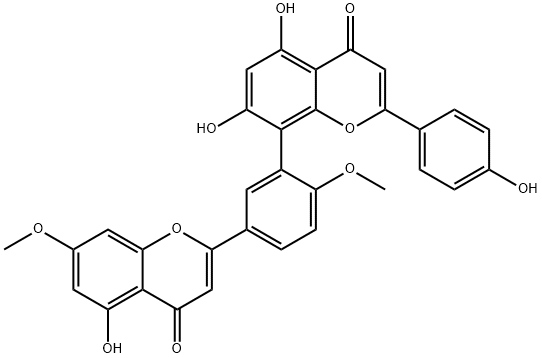
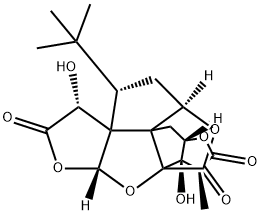
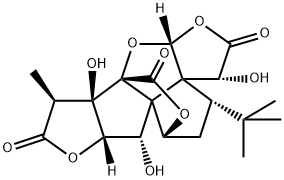
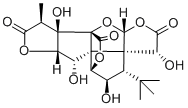


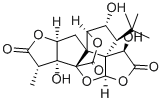
You may like
-
 Ginkgolic acid C15:1 CAS 22910-60-7View Details
Ginkgolic acid C15:1 CAS 22910-60-7View Details
22910-60-7 -
 55441-95-7 99%View Details
55441-95-7 99%View Details
55441-95-7 -
 N-Vinylformamide 99%View Details
N-Vinylformamide 99%View Details
13162-05-5 -
 Chloro Uracil 1820-81-1 99%View Details
Chloro Uracil 1820-81-1 99%View Details
1820-81-1 -
 207557-35-5 99%View Details
207557-35-5 99%View Details
207557-35-5 -
 2-ethyl-6-methyl-3-hydroxypyridine succinate 99%View Details
2-ethyl-6-methyl-3-hydroxypyridine succinate 99%View Details
127464-43-1 -
 2-ETHYLPYRIDINE 100-71-0 99%View Details
2-ETHYLPYRIDINE 100-71-0 99%View Details
100-71-0 -
 181228-33-1 (S)-Methyl 3-amino-2-((tert-butoxycarbonyl)amino)propanote Hydrochloride (DAP-OMe. HCl) 99%View Details
181228-33-1 (S)-Methyl 3-amino-2-((tert-butoxycarbonyl)amino)propanote Hydrochloride (DAP-OMe. HCl) 99%View Details
181228-33-1